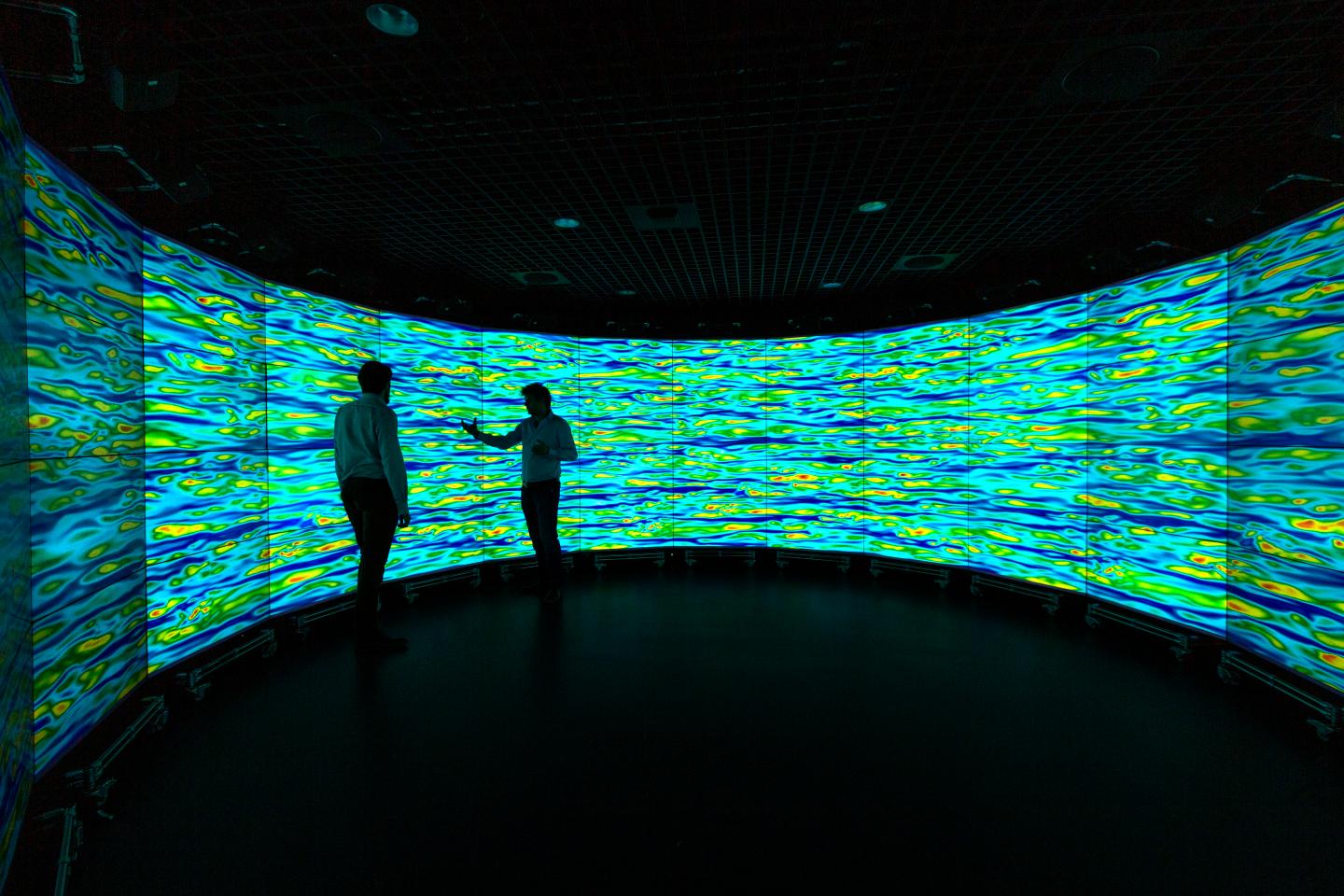
Credit: Thomas Angus / Imperial College London
Advanced simulations have solved a problem in turbulent fluid flow that could lead to more efficient turbines and engines.
When a fluid, such as water or air, flows fast enough, it will experience turbulence – seemingly random changes in velocity and pressure within the fluid.
Turbulence is extremely difficult to study but is important for many fields of engineering, such as air flow past wind turbines or jet engines.
Understanding turbulence better would allow engineers to design more efficient turbine blades, for example, or make more aerodynamic shapes for Formula 1 cars.
However, current engineering models of turbulence often rely upon ’empirical’ relationships based on previous observations of turbulence to predict what will happen, rather than a full understanding of the underlying physics.
This is because the underlying physics is immensely complicated, leaving many questions that seem simple unsolved.
Now, researchers at Imperial College London have used supercomputers, running simulations on graphics processors originally developed for gaming, to solve a longstanding question in turbulence.
Their result, published today in the Journal of Fluid Mechanics, means empirical models can be tested and new models can be created, leading to more optimal designs in engineering.
Co-author Dr Peter Vincent, from the Department of Aeronautics at Imperial, said: “We now have a solution for an important fundamental flow problem. This means we can check empirical models of turbulence against the ‘correct’ answer, to see how well they are describing what actually happens, or if they need adjusting.”
The question is quite simple: if a turbulent fluid is flowing in a channel and it is disturbed, how does that disturbance dissipate in the fluid? For example, if water was suddenly released from a dam into a river and then shut off, what affect would that pulse of dam water have on the flow of the river?
To determine the overall ‘average’ behaviour of the fluid response, the team needed to simulate the myriad smaller responses within the fluid. They used supercomputers to run thousands of turbulent flow simulations, each requiring billions of calculations to complete.
Using these simulations, they were able to determine the exact parameters that describe how the disturbance dissipates in the flow and determined various requirements that empirical turbulence models must satisfy.
Co-author Professor Sergei Chernyshenko, from the Department of Aeronautics at Imperial, said: “From my first days studying fluid mechanics I had some fundamental questions that I wanted to know the answers to. This was one of them, and now after 40 years I have the answer.”
###
Media Contact
Hayley Dunning
[email protected]
Original Source
https:/
Related Journal Article
http://dx.




